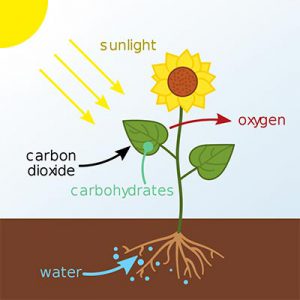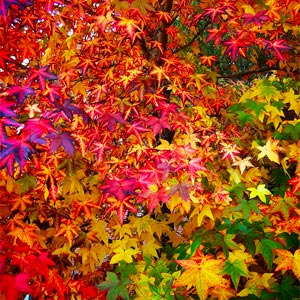Autumn is the most beautiful season of the year; at least it is if you enjoy watching leaves turn from their normal green to myriad shades of reds, yellows and browns, before needing a leaf blower of course and who doesn’t love that? One of the most striking colours that a trees leaves can become is a crimson red, and you’ll be hard tasked to find anyone that disagrees that it’s a sight of pure beauty. But why do leaves turn red? Why do leaves change colour in the first place? To find out we first need to talk about why leaves are green in the first place.
Find out after the jump!
Why Are Leaves Green?

We all learn about what leaves are for in science classes at school, but if you’ve forgotten then here’s a refresher course. Leaves get their green colour due to the processes they go through to help keep a plant or tree alive and healthy. Leaves are crucial in the photosynthesis process; a process that is used by plants to convert light energy into the chemical energy, which uses carbon dioxide and water collected by the plant to turn into carbohydrates, such as sugars, which are then stored by the plant as food. Light energy is captured by chlorophyll, and this pigment is what gives leaves their green colour. Chlorophyll is only created when plants have the sunlight required, although it does not enjoy bright sunlight. Thus, in summer when the sun is at its peak, plenty of chlorophyll is produced and keeps the leaves green.
Yellow Leaves
As the summer draws to a close and the days get shorter less sunlight is available for the plants, so less chlorophyll is produced. Instead of chlorophyll the yellow pigment carotene remains, which had previously been used to help chlorophyll carry out its photosynthesis job. This pigment is also what gives carrots their orange colour, but left in leaves it gradually appears in place of green as the sunlight diminishes. The temperature also affects the level of chlorophyll in leaves too, so a particularly cold autumn will result in the leaves turning yellow a lot quicker.
So, Why Do Leaves Turn Red?
You may have noticed leaves turning red just before they drop from the trees in time for winter. As trees will no longer be able to carry out photosynthesis during the winter, the tree creates a layer of cells at the base of the leaf stalk in order to cut it off from the rest of the tree, thus restricting the movement of sugars and the leaf collector draws close. During this process some trees produce anthocyanin, a purple/red pigment. Not all trees will produce these however, and it totally depends on the situation. This is why you’ll never see some trees with read leaves, and it’s also why the amount and vibrancy of the red leaves is different each year and not to be confused with burnt leaves or unhealthy stressed leaves.
 The layer of cells that cuts off the leaf from the tree does so to protect the tree from drying out during the cold winter. The tree will then shed its leaves to conserve energy, but before doing so it also attempts to suck in as much sugar and nutrients from its leaves as possible to see it through to the spring. The prevailing theory is that anthocyanins are produced to protect the leaves from excess sunlight while the tree carries out the job of sucking up any remaining energy. Since we sometimes get some bright and sunny days during winter, the tree will produce more anthocyanin in order to protect the leaf as best as possible – turning it a more vibrant red. If the winter lacks much sunlight, has many days below freezing or doesn’t have much rain then you won’t see as many red leaves around.
The layer of cells that cuts off the leaf from the tree does so to protect the tree from drying out during the cold winter. The tree will then shed its leaves to conserve energy, but before doing so it also attempts to suck in as much sugar and nutrients from its leaves as possible to see it through to the spring. The prevailing theory is that anthocyanins are produced to protect the leaves from excess sunlight while the tree carries out the job of sucking up any remaining energy. Since we sometimes get some bright and sunny days during winter, the tree will produce more anthocyanin in order to protect the leaf as best as possible – turning it a more vibrant red. If the winter lacks much sunlight, has many days below freezing or doesn’t have much rain then you won’t see as many red leaves around.
So, to have a winter full of redness we need to get the weather to cooperate. Unfortunately we don’t yet have that power, although I’m still crossing my fingers for a magic wand that allows me to stop the rain with a quick flick of my wrist. Oh, and be a billionaire too of course – but that’s a given!
